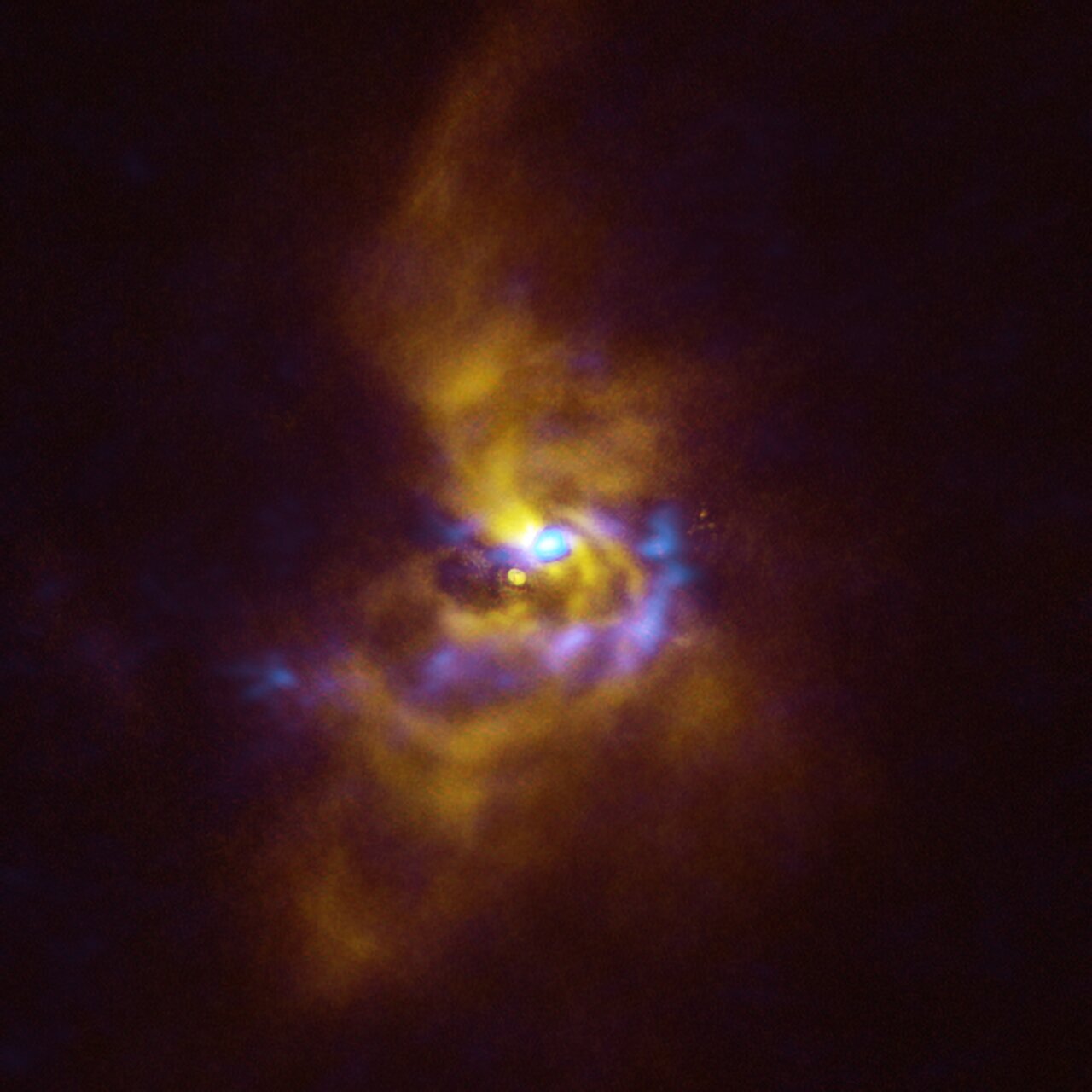New image reveals secrets of planet’s birth
- July 25, 2023
- 0
A stunning new image released today by the European Southern Observatory gives us clues as to how massive planets like Jupiter might have formed. Using ESO’s Very Large
A stunning new image released today by the European Southern Observatory gives us clues as to how massive planets like Jupiter might have formed. Using ESO’s Very Large

A stunning new image released today by the European Southern Observatory gives us clues as to how massive planets like Jupiter might have formed. Using ESO’s Very Large Telescope (VLT) and the Atacama Large Millimeter/submillimeter Array (ALMA), researchers have discovered large dust clumps that can collapse near a young star to form giant planets.
“This discovery is really exciting because it marks the first detection of clusters around a young star that could give rise to giant planets,” said researcher Alice Zurlo of Diego Portales University in Chile, who was involved in the observations.
A study has been published describing the discovery. Astrophysical Journal Letters .
The work is based on a fascinating image obtained by the Spectro-Polarimetric High-Contrast Exoplanet REsearch (SPHERE) instrument at ESO’s VLT, showing fascinating details of the material around the star V960 Mon. This young star is located 5,000 light-years away in the constellation Monoceros and caught the attention of astronomers in 2014 when its brightness suddenly increased more than twenty times. SPHERE observations taken shortly after the onset of this luminosity “glow” revealed that the material orbiting V960 Mon is bundled together in a series of complex spiral arms that extend farther than the entire Solar System.
The discovery then led astronomers to analyze archival observations of the same system made with ESO’s partner ALMA. While VLT observations examine the surface of dusty material around the star, ALMA can look deeper into the star’s structure. “With ALMA, it became clear that the spiral arms break apart to form clusters with masses similar to those of planets,” says Zurlo.
Astronomers believe that giant planets form either through “core growth” when dust particles clump together, or through “gravitational instability” when large clumps of material around the star are compressed and collapse. While researchers have previously found evidence for the first of these scenarios, support for the latter has been lackluster.
“Until now, no one has seen real-world observations of planetary-scale gravitational instability,” says researcher Philip Weber of the University of Santiago in Chile, who led the study.
“Our group has been looking for signs of how planets formed for over a decade, and we couldn’t be more excited about this incredible discovery,” says team member Sebastian Perez of the University of Santiago in Chile.
ESO’s instruments will help astronomers uncover more details of this fascinating planetary system under construction, and ESO’s Extremely Large Telescope (ELT) will play an important role. Currently under construction in Chile’s Atacama Desert, the ELT will be able to observe the system in greater detail than ever before and gather important information about the system.
“The ELT will allow us to probe the chemical complexity surrounding these clumps, helping us learn more about the composition of the material from which potential planets are formed,” Weber concludes. Source
Source: Port Altele
As an experienced journalist and author, Mary has been reporting on the latest news and trends for over 5 years. With a passion for uncovering the stories behind the headlines, Mary has earned a reputation as a trusted voice in the world of journalism. Her writing style is insightful, engaging and thought-provoking, as she takes a deep dive into the most pressing issues of our time.